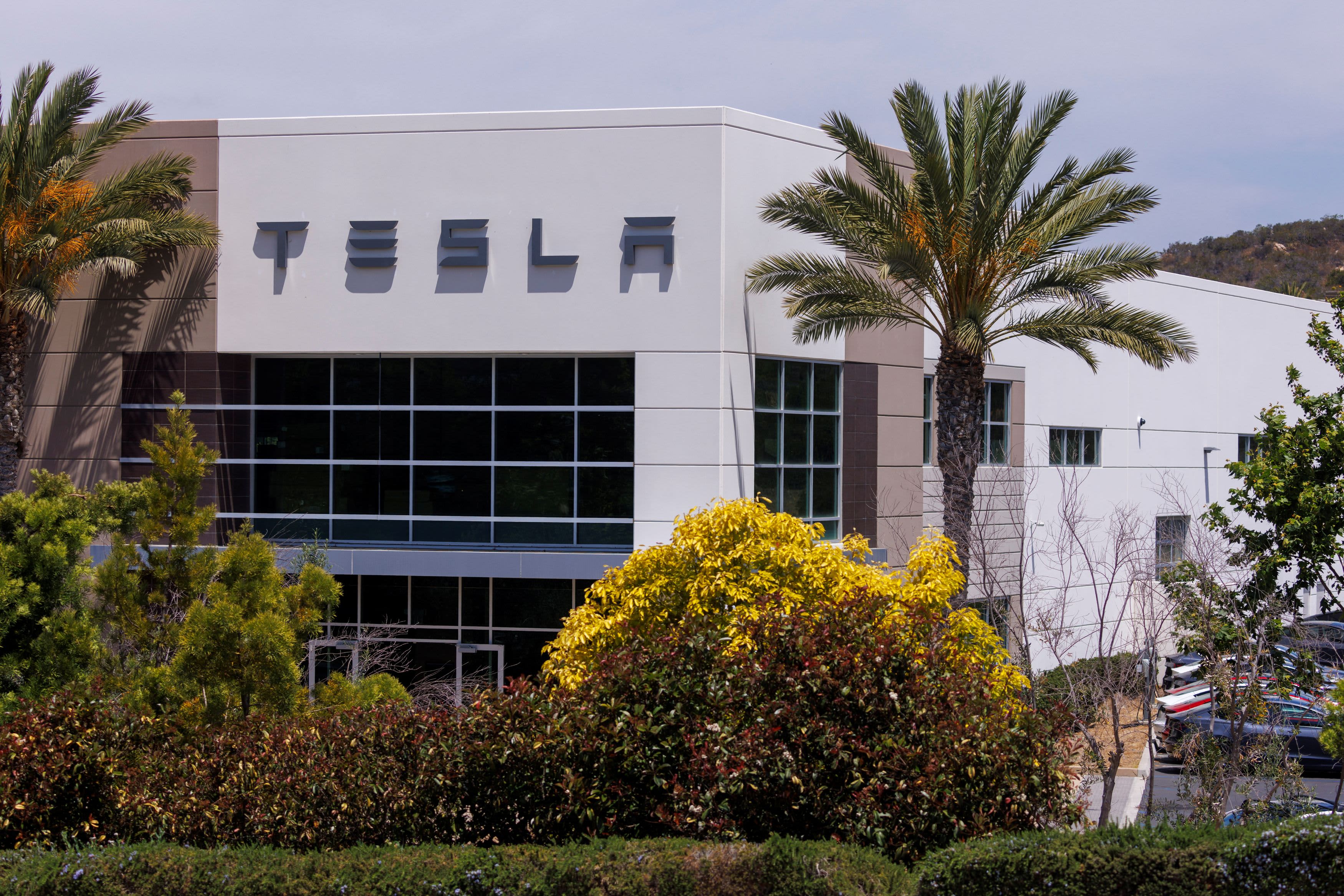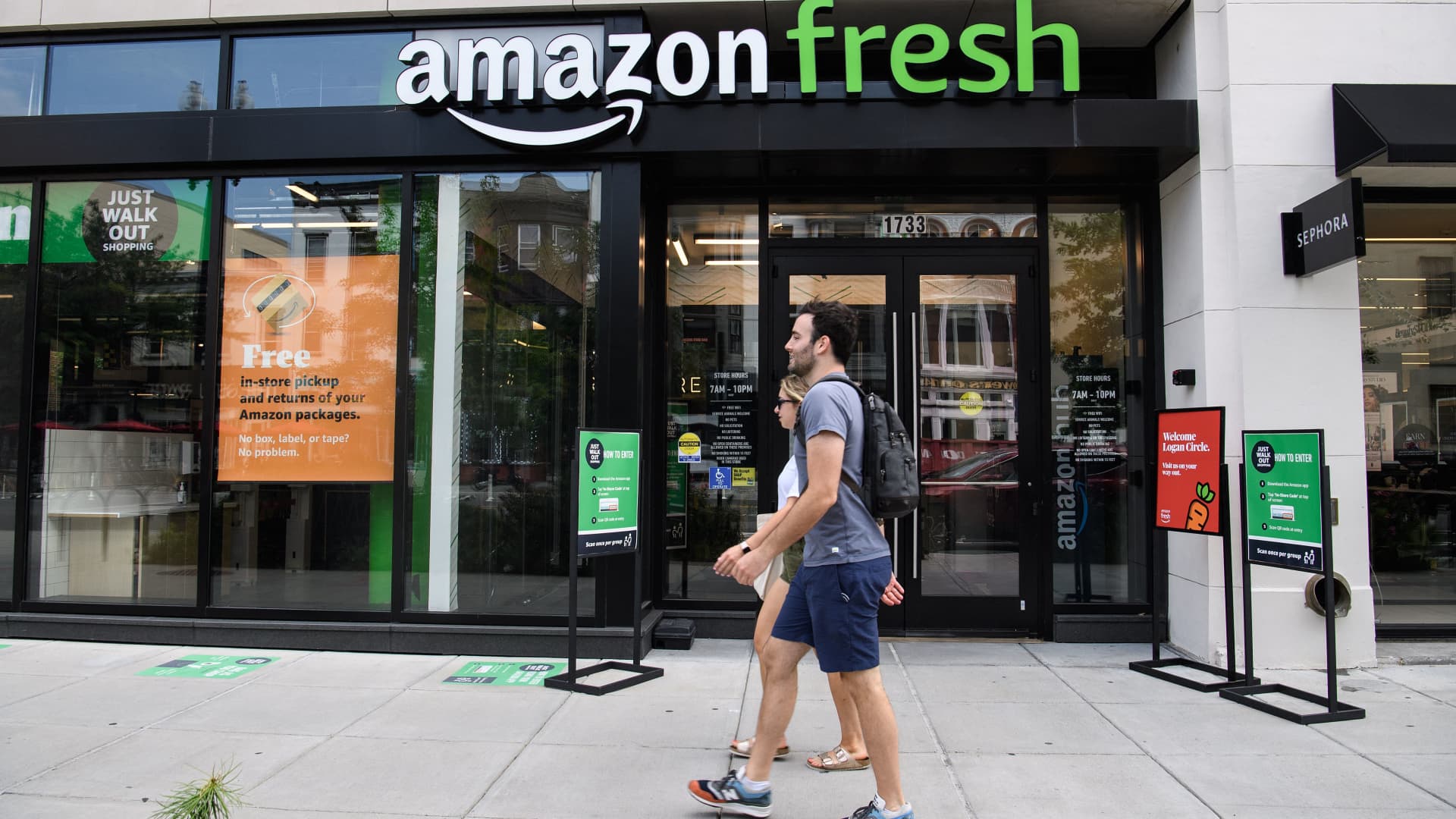People walk past an Amazon Fresh store in Washington, DC, on August 26, 2021.
Nicholas Kamm | AFP | Getty Images
Amazon plans to close some Fresh supermarkets and Go convenience stores, as the e-retailer rethinks its grocery strategy and looks for areas to cut costs.
“We’re continuously refining our store formats to find the ones that will resonate with customers, will build our grocery brand, and will allow us to scale meaningfully over time,” Brian Olsavsky, Amazon’s finance chief, said on the company’s fourth-quarter earnings call on Thursday.
related investing news


Olsavsky said that as part of a periodic assessment of its grocery portfolio, the company “decided to exit certain stores with low-growth potential.” He said the company took a $720 million impairment charge in the fourth quarter as a result.
Amazon will also temporarily halt expansion of its line of Fresh grocery stores until it can find a format that differentiates the company’s offering from others in the industry. CEO Andy Jassy said on the earnings call that Amazon’s stores need to resonate with customers and the company needs to be in a position “where we like the economics.”
“We’re optimistic that we’re going to find that in 2023,” Jassy said. “We’re working hard at it. We see some encouraging signs, and when we do find that equation, we will expand it more expansively.”
Amazon reported better-than-expected fourth-quarter revenue on Thursday but issued a disappointing forecast for the first quarter. The company just closed out its weakest year of growth in its quarter century as a public company and is cutting costs after an extended period of outsized expansion.
Amazon currently operates several dozen Fresh grocery stores and 28 Amazon Go convenience stores, according to its website.
The Information reported in December that a handful of built-out U.S. Amazon Fresh stores sat vacant, signaling a pullback in the company’s grocery strategy.
Amazon has been determined to crack the grocery segment since the launch of its Fresh grocery delivery service in 2007. It made a historic splash when it acquired upscale grocer Whole Foods Market in 2017 for $13.7 billion, Amazon’s biggest acquisition ever.
Amazon’s mix of grocery offerings grew increasingly complex once it launched a line of Go cashierless stores and a Fresh supermarket chain aimed at conventional shoppers. Jassy said he remains bullish about Amazon’s grocery business and is pleased with the progress Whole Foods has been making on profitability in the last year.
“It’s a good business for us in the grocery space,” he added.
Under Jassy, who succeeded Jeff Bezos as CEO in 2021, the company has taken steps to cull expenses in its grocery unit and elsewhere as it grapples with slowing sales and a gloomy economic outlook. Amazon’s plans, announced this month, to eliminate 18,000 jobs, will include cuts across much of its grocery portfolio.
Last March, Amazon announced it would slim down its physical stores portfolio by shutting all its Amazon Books, 4-star and Pop Up shops. The company has also added delivery fees to some orders placed through Amazon Fresh online and a service fee for Prime members who want home delivery from Whole Foods.
WATCH: Amazon beats on revenue, AWS revenue down slightly







